Art World
What Does the Public Want From Art in a Post-COVID World? Here Are 5 Takeaways From a Massive New Study
Above all, audiences want "more fun" when they return to public life post-lockdown.
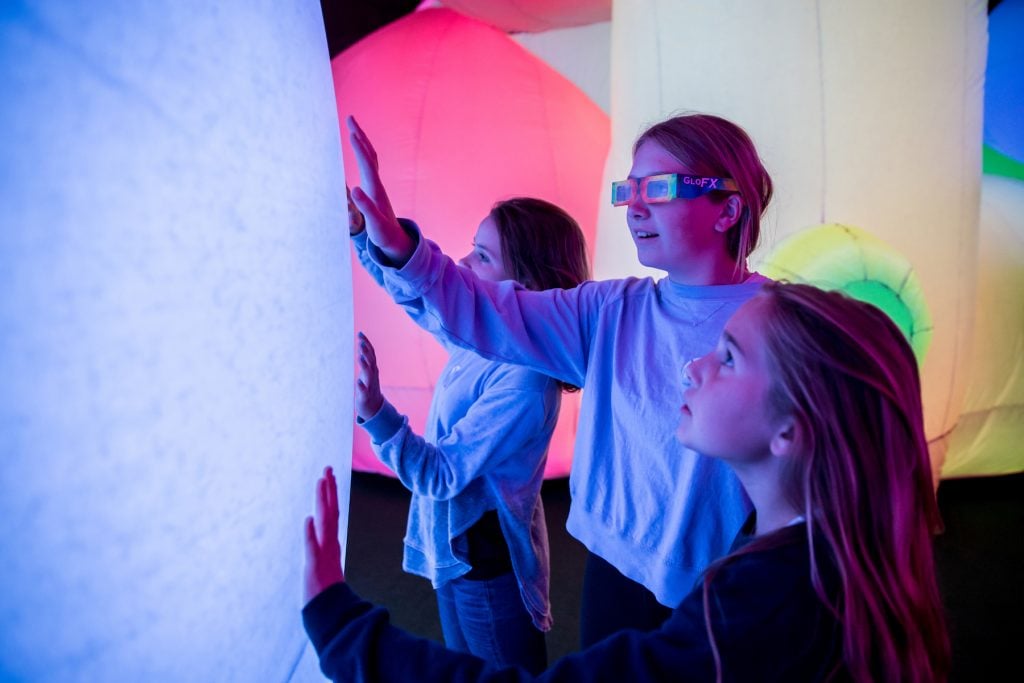
Above all, audiences want "more fun" when they return to public life post-lockdown.

In what’s billed as one of the largest arts and culture studies ever done in the US, the new report “Culture and Community in a Time of Crisis” has surveyed some 124,000 people to take a look at their thoughts on the role of culture in the wake of the COVID-19 pandemic. The results don’t look good, but it’s good data to look at, to get a sense of the challenges the sector faces.
The survey was conducted by the marketing and research firms LaPlaca Cohen and Slover Linett between April 29 and May 19, so the “crisis” of its title does not capture the nationwide surge of racial justice protest that has coursed through the country in the last few weeks. At many times in the summary of the report, the authors note that attitudes may have shifted dramatically in recent weeks in ways the survey doesn’t convey. (A second survey is planned for September.)
The findings reveal the state of cultural affairs in the first few months of forced lockdown, when a lot of activity shifted online. The authors try to give a sense of what the public wants from its arts institutions right now, both in terms of what people might generally want from culture in a gut-wrenching time, and more specifically what potential visitors might need to feel safe enough to return to museums and concert halls at all.
The report covers a lot of ground. Some is frivolous: it offers insight into the creative activities that have been getting people through isolation (cooking takes the cake, with 62 percent of respondents “cooking a new recipe or baking something”). Some is dire: it reiterates the well-known and much-scrutinized bias of the art audience towards whiter, wealthier, and more educated demographics. And some is not art-specific, but gives a sense of forces that might be shaping sensibilities more generally: it offers sobering data about the impact of the pandemic on the public, emotionally and financially.
Ultimately, “Culture and Community in a Time of Crisis” says that its results suggest that arts and culture has “a community mandate” from the public “to become more active participants in their communities.” My reading is a bit more skeptical. It seems to me that the data show a cultural sector in an uneasy relationship with a changing audience and changing expectations of culture, with a difficult road ahead.
It’s all worth poring over yourself, but here some of the more novel findings.
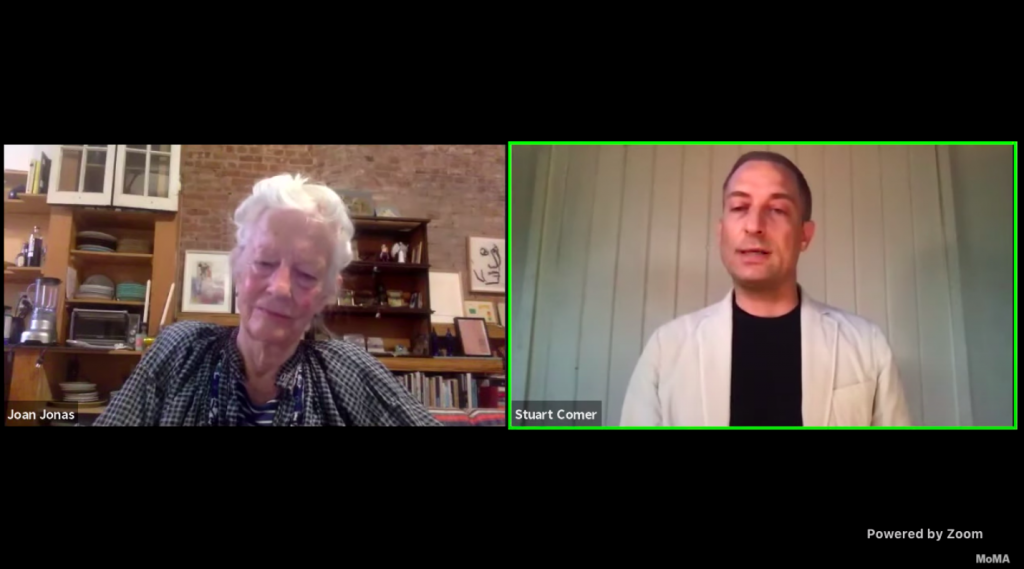
Screenshot of the Museum of Modern Art’s “Live Q&A with Joan Jonas and Stuart Comer.”
While a little more than half of respondents had consumed some form of culture online (about 53 percent), this did not seem to necessarily favor established arts organizations.
The largest single source of culture online was “Individual Performer, Artist, Band, or Ensemble.” About 38 percent of respondents picked this category as a source for arts and culture on the internet.
The second most-reported answer, with 17 percent, was the cryptic “Somewhere Else.” Below that were “Performing Arts Centers,” “Zoo or Aquarium,” “Art and Design Museums,” and “I Don’t Know,” each picked by about 14 percent of survey respondents. (The survey allowed people to select all answers that applied.)
Interestingly, if you dig past the key findings summary into the data tables, it also says that 6 percent of respondents got their “digital cultural activities” from “Arts Activism or Social Justice Organizations”—a small percentage but about the same as people who engaged with “Dance Groups” online. It’s also a source that may well have grown in importance amid in the current wave of protest.
Without further analysis, what all this means is hard to say. But it certainly seems that institutions are not at any particular advantage in the quest for digital attention. Online, cultural institutions don’t have the advantage of all the physical assets that attract an audience and make them a destination. The terrain is much more level—maybe even slanted toward individuals and away from slower, less personal-seeming institutions when it comes to winning people over.
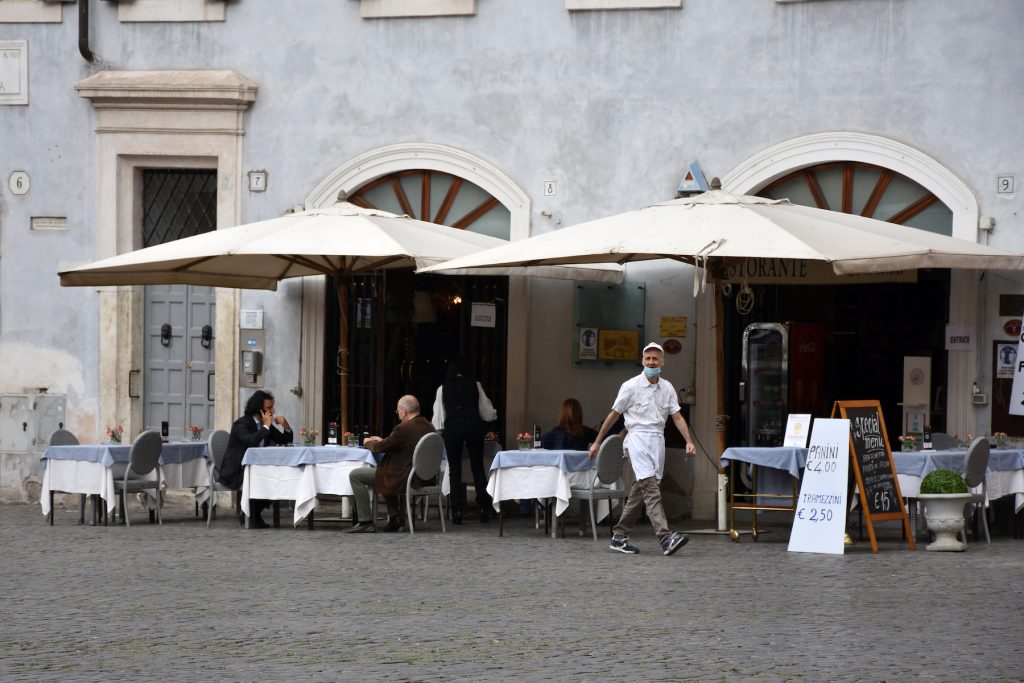
A view of a restaurant open for accepting clients after reopening of restaurants, places of worship, museums, shops amid easing of coronavirus (COVID-19) measures in Rome, Italy on May 18, 2020. Photo by Baris Seckin/Anadolu Agency via Getty Images.
“After weeks of quarantine, respondents are eager to reconnect with loved ones and dine out, but aren’t as excited to resume most cultural experiences,” the report notes.
Of activities the public is looking forward to after the end of social distancing, by far the most popular was “getting together with loved ones in our homes” (70 percent). Some 63 percent were hungry to go to a bar or restaurant, and 37 percent were excited to get off the couch and go out to a movie theater again.
Just 9 percent put down going to an art museum.
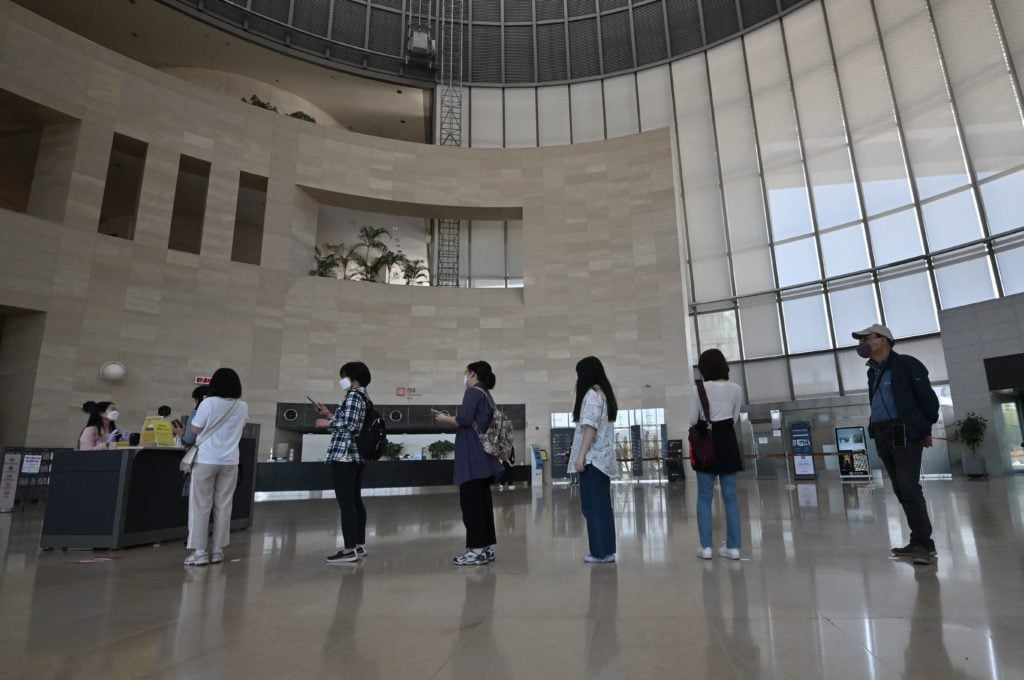
Visitors wearing face masks wait in line to enter an exhibition hall at the National Museum of Korea in Seoul. Photo by Jung Yoen-Je/AFP via Getty Images.
If institutions want to entice visitors back, what can they do? The bad news is that when asked which factors “will most influence your decision to resume attending in-person arts and culture experiences,” half of those who responded said that the existence of a COVID-19 vaccine was what they needed most.
The only factor on the survey that was more important than a (still faraway) vaccine was “increased cleaning of all surfaces,” which some 54 percent of respondents said would help get them back. That suggests that prominently advertising sanitation measures is a solid start—although the answer actually seems perilously dated in that it is now widely accepted that the coronavirus is rarely transmitted via surfaces, and that breathing in droplets released in the air, particularly indoors, is likely the biggest infection vector.
Other big factors noted as potentially tempting people back to cultural institutions were reducing admissions so that visitors could spread out (important for 46 percent of people) and mandating masks (important for 43 percent of people).
Only 19 percent said that an art institution’s own decision to announce that it was ready to open again was key to their decision. But, since people want to be more spread out anyway, maybe that’s OK.
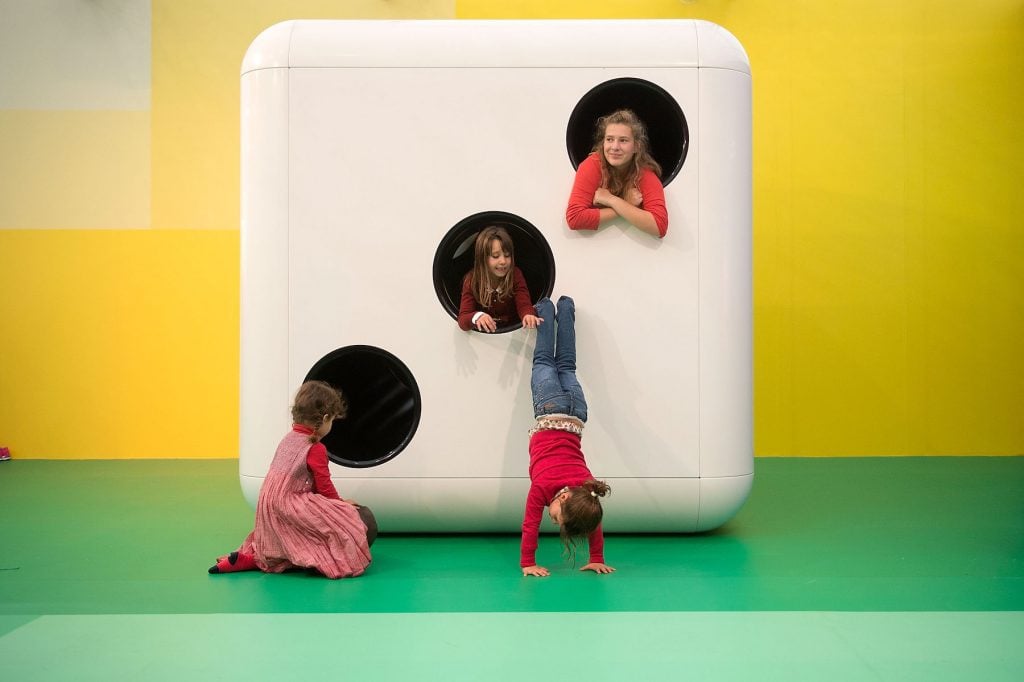
Children play on artist Carsten Holler’s installation Gartenkinder, which doubles as a children’s playground. Photo by Matthew Lloyd/Getty Images for Gagosian Gallery.
In recent years, there has been much talk in the arts industry about reimagining museums and art spaces as “community centers” offering tangible services. According to this study, at least, this is not what the audience wants or expects from culture—even “in a time of crisis.”
In response to the question, “How would you ideally want arts and culture organizations to help your community during this crisis?” the most popular answer was “laugh and relax” (53 percent), followed by “stay connected” (49 percent), “educate children when schools are closed” (47 percent), and “offer distraction and escape during the crisis” (46 percent). As the survey summed it up, “activities that are fun, lighthearted, and beautiful appeal most.”
The least popular answer of all those offered was “meet our practical, everyday challenges,” which only 18 percent of people saw as a role for arts and culture organizations.
In answer to another question, about “what kinds of changes would make arts and culture organizations better for you in the future,” the most popular answer was that they could be “more fun” (28 percent). (That actually tied with another popular answer: “Nothing—I wouldn’t change them at all.”)
Other popular answers were “supporting local artists, organizers, etc.,” at 24 percent (it’s not clear to me what “organizers” was intended to mean); being “friendlier to all kinds of people,” also at 24 percent; and “treat[ing] their employees fairly and equitably,” at 20 percent.
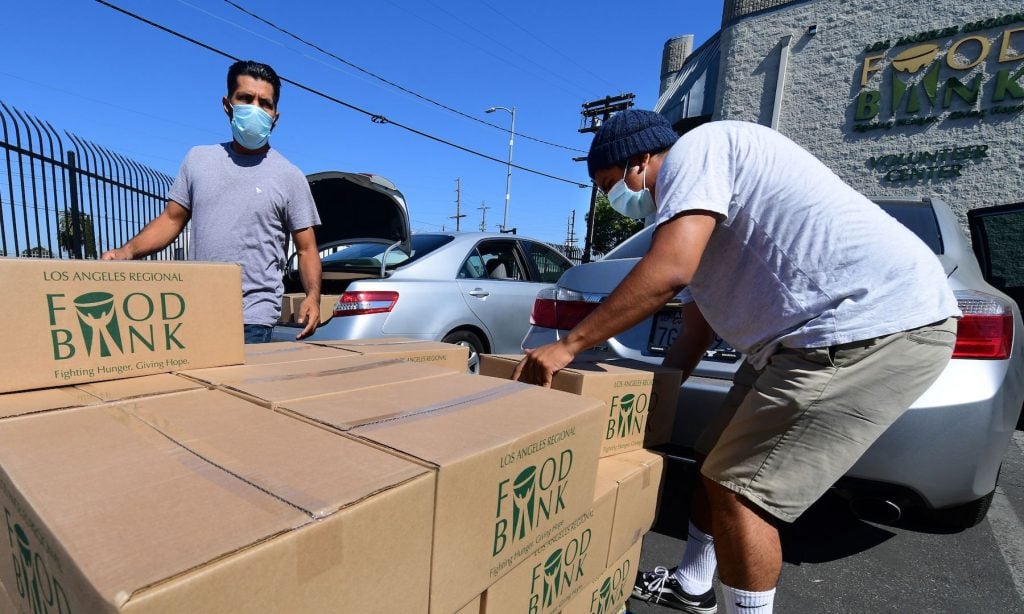
People load their vehicles with boxes of food at a Los Angeles Regional Food Bank on May 5, 2020 in Los Angeles, California. Photo by Frederic J. Brown/ AFP via Getty Images.
Perhaps when it comes to “meeting practical, everyday challenges,” the public doesn’t think of art first because many people already give to a variety of other charities for that purpose.
The survey notes that both before and after the onset of the pandemic, “art, culture and humanities” was ranked fourth as a destination for charitable donations for respondents. “Human services” (poverty, children’s aid, and aid for the elderly) stayed in first place; “religion” held in second.
“Health,” for obvious reasons, has shot up and is now the third biggest destination for donations.
(The survey asked both about which charities people had given to in the last two years, and which charities they had given to since the pandemic—a much shorter timeframe, meaning the percentages are logically much lower. About 41 percent had given to arts charities in the last two years, and about 13 percent since the outbreak began. For “social services,” the same numbers are 56 percent and 27 percent.)
“Culture and Community in a Time of Crisis” found that 61 percent of the public was aware that arts organizations in their area were under financial strain. Nevertheless, 38 percent said that other, non-art charities should be supported before the arts. Only 16 percent placed their struggling cultural groups as a priority.
About half—47 percent—were neutral on the matter.